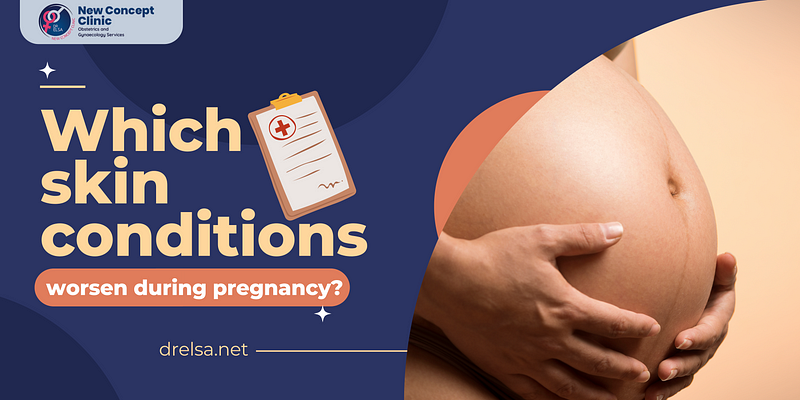
In pregnancy, a woman's body goes through a multitude of changes, resulting in various internal and physical transformations reflected on the skin. Some of these skin changes are common and predictable, whereas others lead to some severe complications during pregnancy. As per the reports of the Top Specialists in Obstetrics and Gynaecology in Dubai, these pregnancy-related skin changes and conditions disappear once the baby is delivered. The most common skin changes that women experience are dark spots, melasma, acne, spider veins, stretch marks, and others.
The common skin conditions in pregnancy are categorized into three types:
Hormone-related skin conditions
Many skin conditions that a woman will experience during pregnancy occur due to the surge in hormone levels or changes that the body goes through. The most common skin conditions caused by hormones are:
Hyperpigmentation: This skin condition in pregnancy is caused by the increased production of melanin in the body, which results in skin darkening, dark spots, and patches on the skin.
Melasma: Commonly known as chloasma, it is a type of hyperpigmentation that leaves brown patches on different parts of the face, like the face, forehead, cheeks, and more.
Hair: Increased growth in the hair due to hormonal changes during pregnancy is the biggest problem a woman goes through. Appearing on different parts of the body, like the face, limbs, and back, women can see increased growth.
Vascular changes: Due to hormonal changes, the skin undergoes various vascular changes that cause dilation, proliferation, instability, and congestion of the blood vessels.
Pregnancy-related skin conditions
The skin conditions that appear in pregnancy due to the hormone are a bit rare. For instance:
Plaques of pregnancy: The most common skin condition during pregnancy that results in small, red bumps and hives slowly transforming into itchy brown patches.
Prurigo of pregnancy: Resembling that of insect bites, the prurigo of pregnancy can get worse, and it takes several months to disappear.
Impetigo herpetiformis: Known as pustular psoriasis of pregnancy, that rare skin condition appears in the second half of the pregnancy and includes symptoms like nausea, vomiting, diarrhea, fever, and more.
Pemphigoid gestationis: An autoimmune disorder of the skin that affects women during the second and third trimesters of pregnancy and includes symptoms like blisters in the abdomen and other body parts.
Pre-existing skin conditions
An existing skin condition in pregnancy can cause serious troubles or worsen the condition. The most common pre-existing skin condition affecting pregnancy includes:
Fungal infection: Infection caused by the fungus during pregnancy can sometimes be serious and require a longer course of treatment.
Cutaneous tumors: Visible like molluscum fibrosum gravidarum and malignant melanoma cutaneous tumors are some of the pre-existing skin conditions.
Psoriasis: A skin problem that increases during pregnancy with symptoms like red, itchy, and scaly patches.
Atopic dermatitis: A skin condition that increases during pregnancy and causes red skin and itchiness.
No comments:
Post a Comment